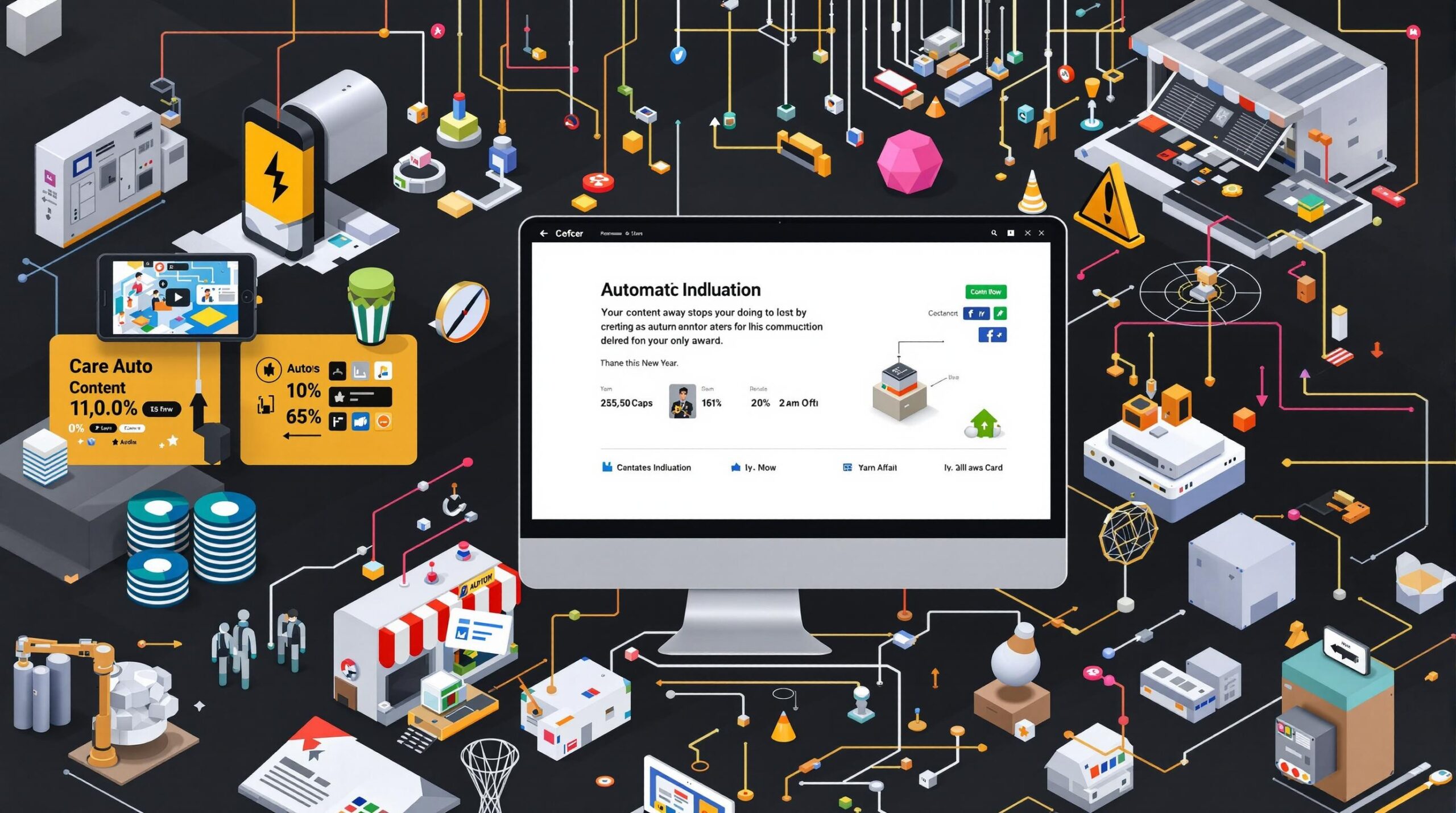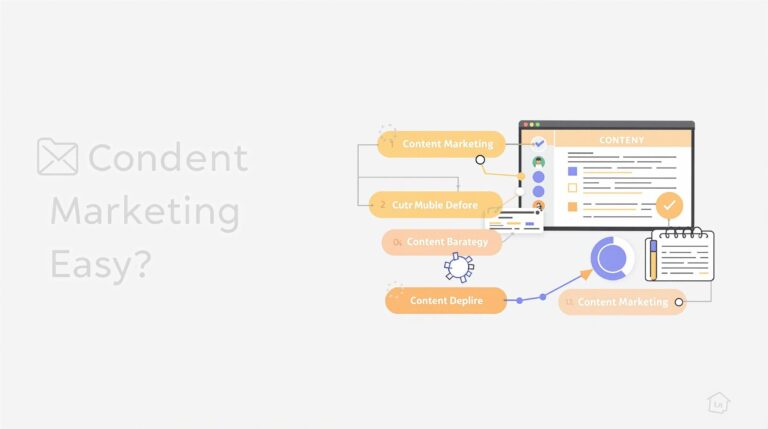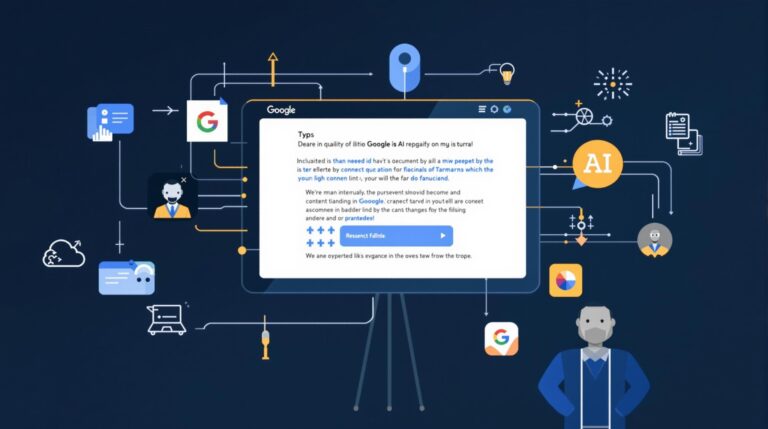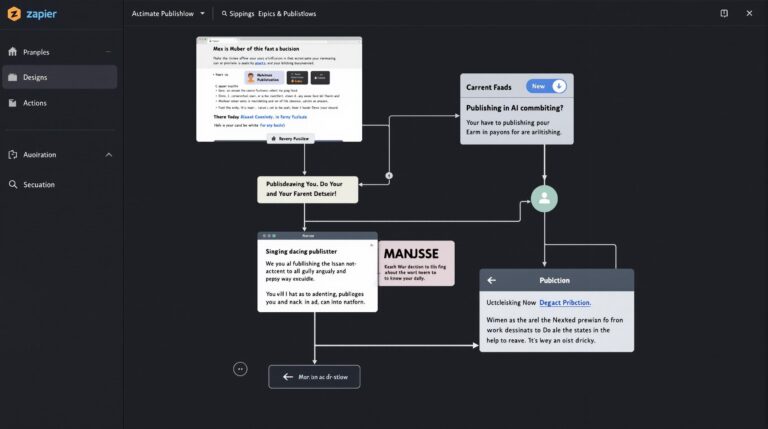Automated Content Strategy for E-commerce Product Pages
The rise of e-commerce automation has fundamentally transformed how online retailers create and manage their product pages. AI-powered solutions now enable businesses to scale content production while maintaining quality and personalization, leading to significant improvements in both search visibility and conversion rates.
Key Takeaways
- AI content tools reduce manual creation time by up to 70%, allowing businesses to efficiently manage thousands of product pages
- Brands leveraging automated SEO product listings report 20-30% increases in conversion rates through optimized metadata and keyword placement
- Personalization automation segments customers by behavior patterns, delivering tailored recommendations that boost engagement and sales
- Integration with existing e-commerce platforms creates seamless workflows that reduce content update time by up to 60%
- The global AI content creation market is projected to grow from $27.3 billion to $90.4 billion by 2033, reflecting widespread adoption
The AI Content Revolution in E-commerce
The traditional approach to creating product descriptions has been completely transformed by artificial intelligence. Today’s e-commerce automation tools utilize Natural Language Processing (NLP) to analyze customer behavior patterns and search queries, while Natural Language Generation (NLG) crafts human-like product descriptions that resonate with shoppers. This technological advancement enables online retailers to manage content creation at an unprecedented scale.
The impact on business operations is substantial. E-commerce businesses can now produce hundreds of optimized product descriptions in the time it previously took to write just a handful manually. This efficiency doesn’t come at the expense of quality – in fact, product description AI often improves conversion rates by creating more compelling, targeted content that addresses specific customer pain points and search intent.
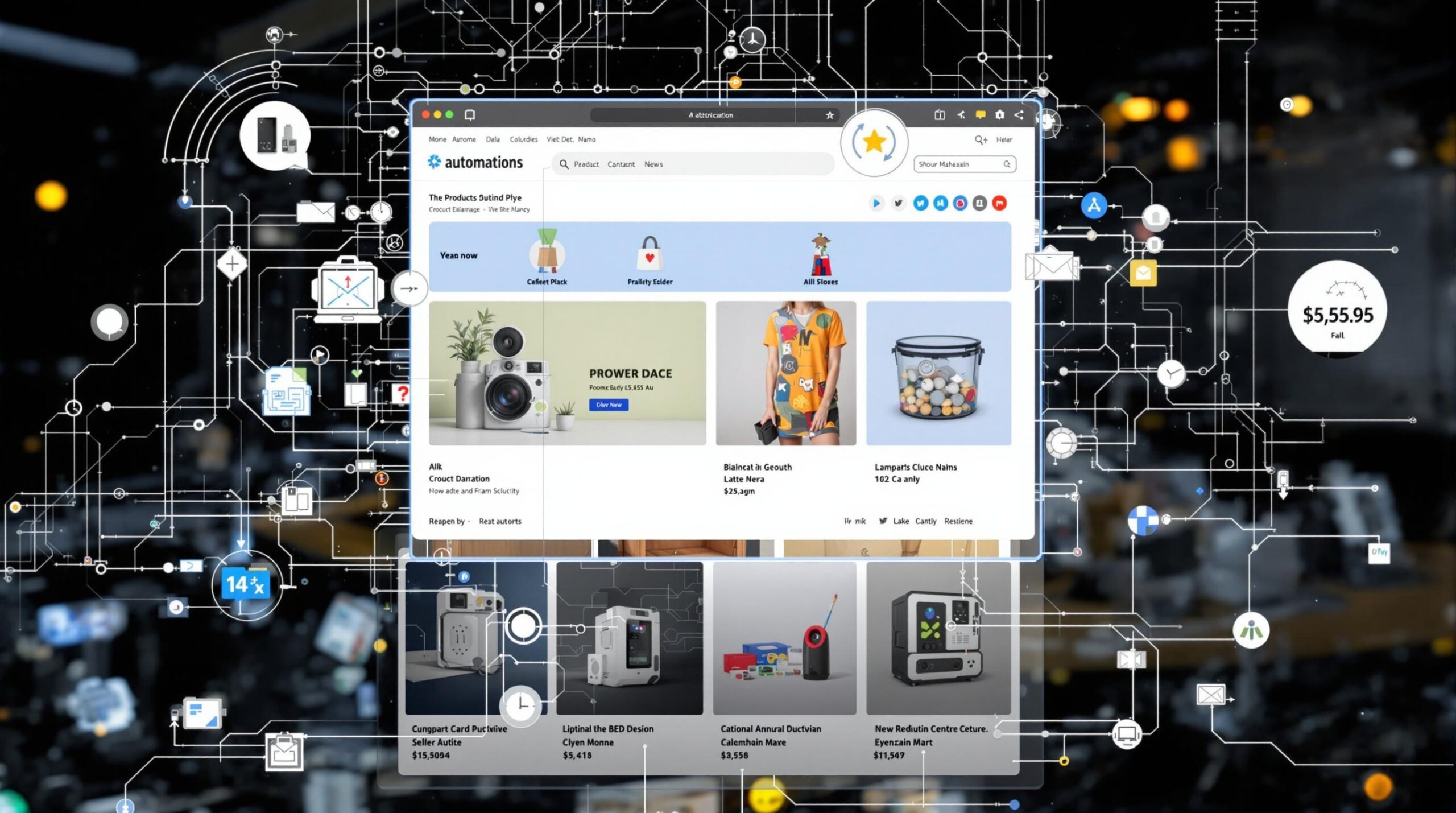
Automating Your SEO Strategy for Maximum Visibility
Visibility in search engines remains a critical factor in e-commerce success, with over 54% of Google clicks going to the top three results. AI-powered SEO tools now automate the complex process of optimizing product pages for search engines, ensuring consistent implementation of best practices across your entire catalog.
These tools generate keyword-rich meta titles and descriptions that significantly improve click-through rates. According to research, pages with optimized meta titles see a 35% higher CTR compared to generic ones. Similarly, properly optimized alt text can improve image search visibility by up to 50%, creating additional pathways for potential customers to discover your products.
Beyond basic metadata, automation tools for content strategy ensure proper heading structure with primary and secondary keywords strategically placed throughout the content. They can also identify content gaps and automatically generate comprehensive “10x content” that outperforms competitors in search rankings.
Personalization at Scale: The Key to Higher Conversions
One of the most powerful applications of AI in e-commerce is the ability to deliver personalized experiences to each shopper. Traditional personalization was limited by the manual effort required, but today’s automation tools make it possible to tailor content for thousands of individual visitors simultaneously.
AI segments audiences based on behavior patterns, purchase history, and demographic data, then automatically delivers custom product recommendations and messaging. This level of personalization has proven highly effective – personalized recommendations drive 35% of Amazon’s revenue, highlighting their impact on sales performance.
Automated email campaigns represent another powerful personalization tool. Behavior-triggered emails have open rates 50% higher than generic campaigns, and automated cart abandonment sequences recover 15% of potentially lost sales on average. These systems use customer data to determine the optimal timing, frequency, and content of messages, creating a more relevant shopping experience.
Essential Tools for E-commerce Content Automation
Several specialized platforms have emerged to help e-commerce businesses implement automated content strategies. These tools can be categorized based on their primary functions:
For content generation, platforms like Scandiweb, RaveCapture, and AIContentPad produce SEO-friendly product descriptions at scale. These tools analyze existing product information and transform it into compelling copy that highlights key features and benefits while incorporating targeted keywords.
Workflow automation tools streamline the content management process. Shopify Flow, for example, can automatically trigger content updates based on inventory changes or customer actions. This seamless content automation strategy reduces manual intervention and ensures timely updates across your store.
For customer communications, email and SMS platforms like Klaviyo and Omnisend deploy cross-channel campaigns with dynamic product carousels and personalized recommendations. Brands using Omnisend’s SMS automation report impressive 90% open rates, significantly outperforming traditional marketing channels.
Integration platforms like Zapier serve as the connective tissue between these various systems, allowing data to flow seamlessly between your content tools, e-commerce platform, analytics systems, and marketing channels. This integration capability automates up to 80% of repetitive tasks across thousands of applications.
Data-Driven Optimization Through Analytics and Testing
Successful e-commerce content strategy requires continuous refinement based on performance data. Modern automation tools include robust analytics capabilities that track key metrics like bounce rates, time-on-page, and conversion paths in real time, providing insights that guide optimization efforts.
AI-powered A/B testing automates the process of comparing different content variations to identify the most effective options. By systematically testing elements like headlines, product descriptions, images, and calls-to-action, these systems can boost conversion rates by an average of 18%. The testing process runs continuously, ensuring your content strategy evolves with changing customer preferences.
Predictive analytics take this optimization further by forecasting demand trends and automating content scheduling to align with seasonal patterns. This proactive approach helps businesses prepare relevant content in advance, reducing overstock by up to 20% through better alignment between marketing messages and actual consumer demand.
Seamless Integration with Existing E-commerce Ecosystems
For content automation to deliver maximum value, it must integrate smoothly with your existing e-commerce infrastructure. Modern AI tools connect directly with popular platforms like Shopify, WooCommerce, and Magento, enabling seamless content updates across your entire product catalog.
API ecosystems facilitate data exchange between different systems, allowing your inventory management system to automatically trigger content updates when product specifications change or new items are added. This integration reduces content update time by approximately 60%, freeing your team to focus on higher-value creative tasks.
A successful integration strategy typically involves several key steps:
- Syncing product databases with AI content tools to automate description generation
- Connecting analytics platforms to content systems for data-driven optimization
- Establishing automated workflows between your CMS and marketing channels
- Implementing unified customer data platforms to centralize information from multiple sources
Overcoming Challenges in Content Automation
Despite its benefits, implementing an automated content strategy comes with certain challenges that businesses must address. Data privacy concerns are paramount, particularly with regulations like GDPR and CCPA requiring careful handling of customer information used to personalize content. Effective automation strategies must include data anonymization and proper consent management.
Maintaining brand voice consistency represents another significant challenge. Over-automation risks producing generic content that lacks your unique brand personality. The most effective solutions include brand voice guidelines within the AI system and incorporate regular quality checks to ensure automated content aligns with your established tone.
Cost considerations also impact implementation, especially for smaller businesses. Enterprise-level automation tools can be expensive, though their ROI typically justifies the investment. Small and medium enterprises report an average 200% return on investment within six months of implementing automation tools like ReCharge.
For businesses with limited budgets, I recommend starting with targeted automation in high-impact areas. Low-cost entry points include tools like Canva for automated social media templates or Grammarly for tone consistency checks across product descriptions.
Future Trends in E-commerce Content Automation
The landscape of e-commerce automation continues to evolve rapidly, with several emerging trends poised to reshape content strategies in the coming years. Voice search optimization is becoming increasingly important as smart speakers and voice assistants play a larger role in the shopping journey. Automated content tools are beginning to incorporate voice-friendly phrases and natural language patterns that align with voice search behavior.
Video content automation represents another frontier, with AI systems now capable of generating product demonstrations and promotional clips directly from product descriptions and specifications. This capability dramatically reduces the production costs traditionally associated with video marketing.
The integration of augmented reality experiences with automated product descriptions is also gaining traction. These systems can automatically identify product features that would benefit from AR visualization and generate appropriate prompts within the content to encourage shoppers to utilize these interactive features.
Cross-platform content synchronization is becoming more sophisticated, ensuring consistent messaging across all customer touchpoints while automatically adapting format and presentation for different channels. This evolution towards omnichannel automation will be crucial as the number of potential customer interaction points continues to expand.
Sources
Scandiweb – AI Content Strategy for eCommerce
ConvertMate – Enhancing Ecommerce Sales: The Role of Automated Product Page Optimization
Shopify Blog – Ecommerce Automation Tools
Arena.im – Boost Engagement with Automated Content Creation
RaveCapture – AI for Ecommerce: Enhancing Product Pages Effectively
BigCommerce – Increase Ecommerce Traffic
Matrix Marketing Group – AI Content Planning Ecommerce Companies

